Moai statues are massive megaliths at Easter Island, and these are what this island is famous for. The moais were built in approximately 1400 – 1650 A.D. by the natives of this island also known as Rapa Nui.
Many know them as the Easter Island heads. This is a misconception from having seen photos of statues in the volcano Rano Raraku partitially covered up with soil. Truth is that all of these “heads” have full bodies.
There are around 1000 statues, up to 86 tons tons in weight and 10 m in height, though average is around half of that. 95% of the moais were carved from the volcano Rano Raraku. This location was chosen since it consists to a great extent of tuff, which is what the moais from this volcano consist of. Tuff is compressed volcanic ash and is easy to carve, which was necessary since the natives had no metal to carve with, but used only stone tools; the so called toki.
What do moais represent?
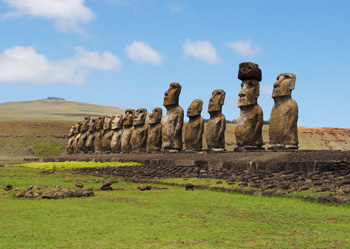
Moais with full bodies visible at Ahu Tongariki.
Moai statues were built to honor chieftain or other important people who had passed away. They were placed on rectangular stone platforms called ahu, which are tombs for the people that the statues represented. The moais were intentionally made with different characteristics since they were intended to keep the appearence of the person it represented.
There was one group of carvers from which the statues were bought. The buying tribe would pay with whatever they had large quantities of. Examples of trade items would be sweet potatoes, chickens, bananas, mats and obsidian tools. Since a larger statue would mean a higher cost, bigger statues would also mean more greatness for the tribe, since it would be a proof of that the tribesmen are clever and hard-working enough to pay.
Eyeholes would not be carved until the statue reached its destination. A pukao of red scoria stone from the quarry Puna Pau would in later years sometimes be placed on the head of the statue to represent the long hair the desceased had, which was a sign of mana; a kind of mental power. Eyes of coral would mark the final touch, and the moai would be an ‘ariŋa ora or living face. The spirit of he or she who had passed away would forever watch over the tribe and bring fortune in life. This is why the statues are called mōai – so that he can exist
Statues getting toppled
When the first European ship arrived to Easter Island in 1722, all statues that were reported on were still standing. Later visitors report on more statues that have fallen as the years pass, and in the end of the 19th century, not a single statue is standing. The most common theory to this is that the statues were overthrown in tribal warfare to humiliate the enemy. An argument for this is the fact that most statues have fallen forward with the face into the earth.
There is also a legend about a woman called Nuahine Pīkea ‘Uri who possessed strong mana powers and made the statues fall in anger when her four children at one occasion had left her nothing to eat. Some Easter Island elders still believe this to be the true story.
Tools used for carving moai statues
The tools used for carving the moai statues are called toki, and are simple handheld chisels. They have been found in countless numbers in all excavations at Rano Raraku – particularly around the statues. The highest quality toki are made of hawaiite, which is the hardest kind of rock found at Easter Island. There is only one place where this can be found – in a toki quarry called Rua Toki-Toki just south of Ovahe at the north side of Rapa Nui. Its scarcity, while still being used for something as central and important as carving moais, made it highly valuable in ancient times.
Moai sanctity
As the first European visitor to the island in 1722, Jacob Roggeveen reported in his ship log of people praying to the statues:
The people had, to judge by appearances, no weapons; although, as I remarked, they relied in case of need on their gods or idols which stand erected all along the sea shore in great numbers, before which they fall down and invoke them. These idols were all hewn out of stone, and in the form of a man, with long ears, adorned on the head with a crown, yet all made with skill: whereat we wondered not a little. A clear space was reserved round these objects of worship by laying stones to a distance of twenty or thirty paces. I took some of the people to be priests, because they paid more reverence to the gods than did the rest; and showed themselves much more devout in their ministrations. One could also distinguish these from the other people quite well, not only by their wearing great white plugs in their ear lobes, but in having the head wholly shaven and hairless.
Only Jacob Roggeveen in 1722 has ever reported on someone praying to the statues, which would suggest that the statues were revered until Europeans came. Though, it was common all over the island to recycle pieces of old statues when building new ahu platforms. This seemingly means that the moais were not seen as holy anymore when the person it represented had been forgotten.
Transportation of moai statues
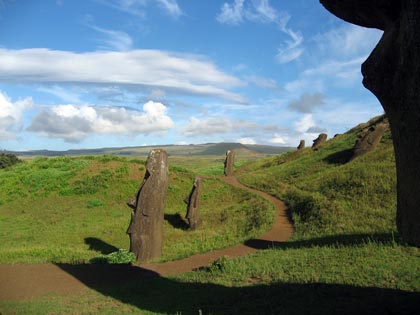
Moais standing in the statue quarry Rano Raraku, awaiting transportation.
Video from Thor Heyerdahl’s 1986 visit of Rapa Nui native demonstrating how statues walked.
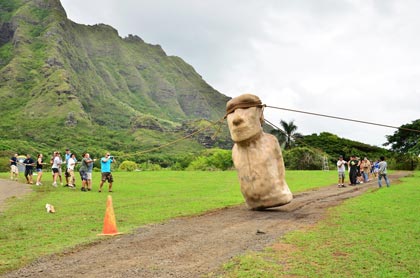
5 ton moai statue replica is made to walk by rocking it during 2012 July experiment at Hawai’i by Terry Hunt and Carl Lipo.
One of the biggest Easter Island mysteries is how stone age tribes could succeed in transporting 50+ ton moai statues kilometers across hilly terrain. There are several transportation theories, some of which are more generally accepted than others.
Upright transportation
There are many moai statues that fell during transportation to their ahu. Some of these are on their stomach and some on their back. This tells us that the moais were transported upright. Since the moais are standing in the quarry Rano Raraku, and they are standing when having reached their ahu, upright transportation saved the Rapa Nui people the huge amount of labor of lowering and raising the statues.
Transportation on rollers
The most widely accepted theory is that the statues were standing on some kind of construction that would keep the statue standing, which would roll on logs. With this technique, brute force could be applied and rapid, safe moai statue transportation would be possible. As statues got bigger, huge amounts of lumber would be needed. This would eventually cause deforestation of all thick and straight trees, which then made transportation impossible.
American archaeologist Charles Love experimented with the technique of transporting a statue on rollers. He moved a 9 ton moai replica 40 meters in only 2 minutes, using not more than 25 people. No other moai transportation experiment has been able to match this one in speed.
Walking by rocking
According to oral tradition, the moai statues walked to their destination. A literal interpretation of this legend would be that the statues were rocked from side to side, just like you would a refridgerator, to actually make them walk. For this, no wood would be required – only ropes.
There are three main weaknesses with this theory:
- It doesn’t explain the disappearence of the trees.
- The statue would fall quite easily during transportation.
- Transportation technique is very time consuming. Considering the quantity of statues and their distance from Rano Raraku, a quicker way of transporting the statues would be more advisable.
Norwegian explorer Thor Heyerdahl together with Pavel Pavel were the first ones to experiment with this transportation theory and did so with a 9 ton ancient statue in 1986. First they only dragged a statue on the ground, one side at a time. This took lots of time and energy without much result. Later they attached ropes also to the head to be able to make it tilt while turning, and the statue moved with much greater ease.
The second experiment of this theory was performed in July 2012 at Hawai’i by American archaeologists Terry Hunt and Carl Lipo. A 5 ton replica was moved by a group of 30 people. This experiment received great attention world-wide through a National Geographic report.
Extraterrestrials
That aliens made the moai statues is a quite common belief. Though, according to oral legends the Rapa Nui people made the statues. Also, the further away statues are from the statue quarry Rano Raraku and the higher the elevation of their final destination, the smaller the statues are, because people had to drag them there.
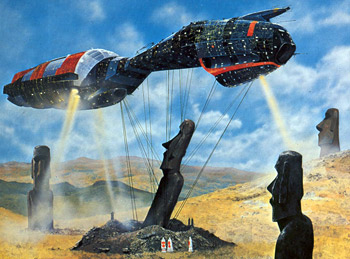
Aliens placing a moai statue at Rapa Nui.



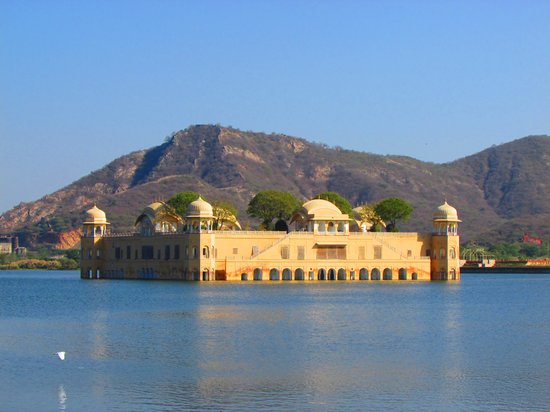
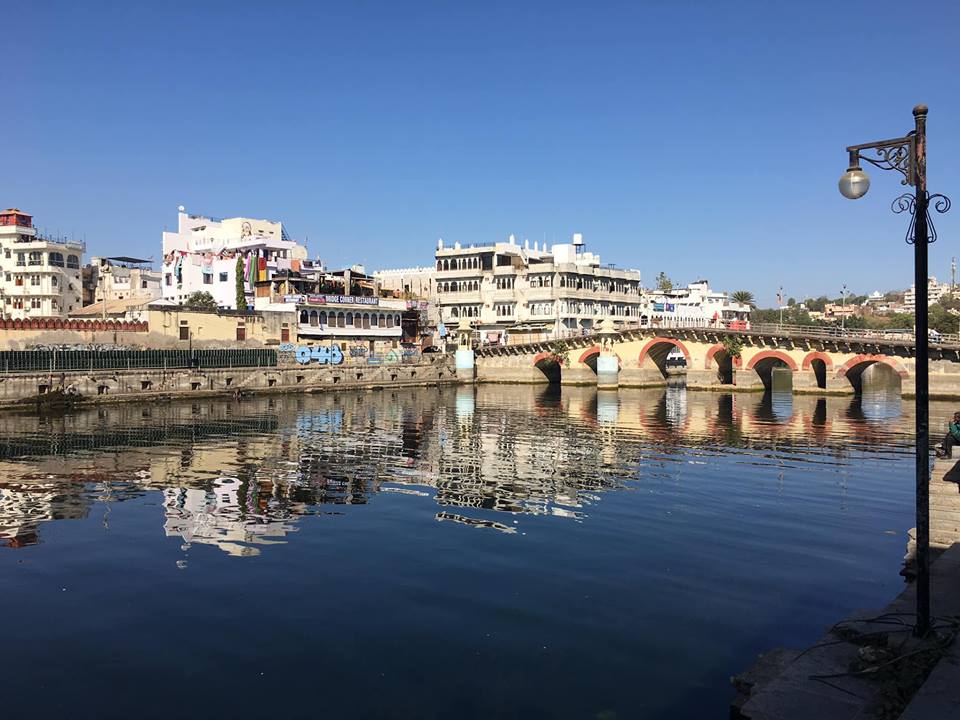
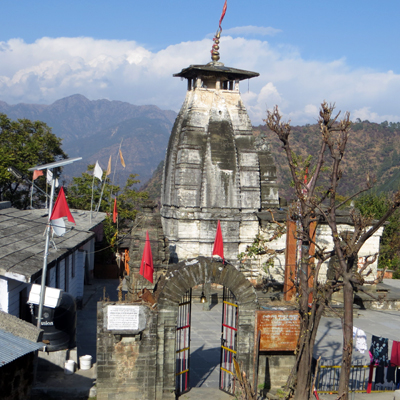

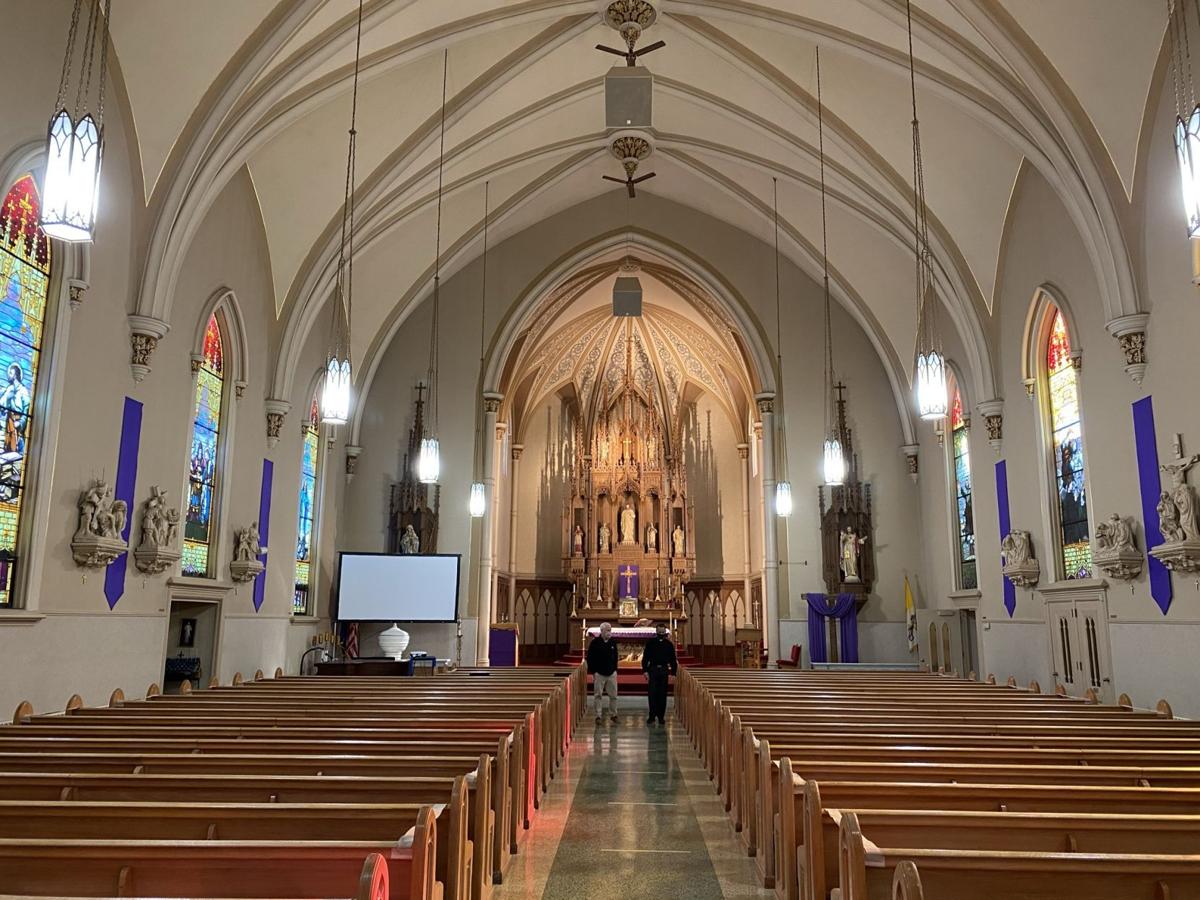

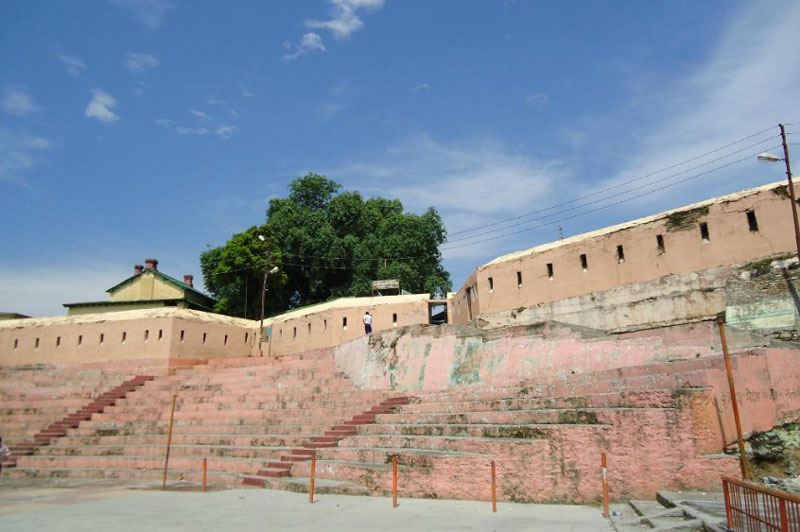


5 Comments
Comments are closed.